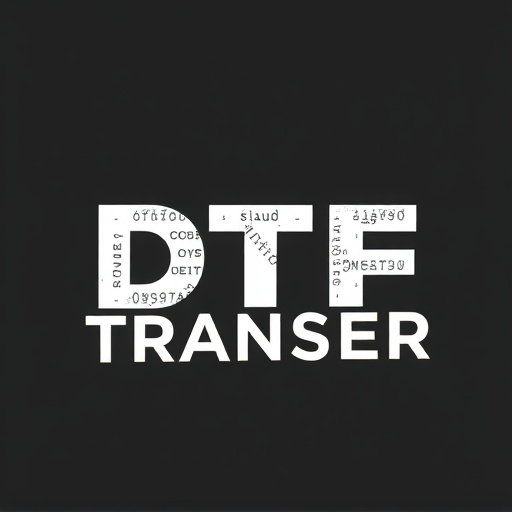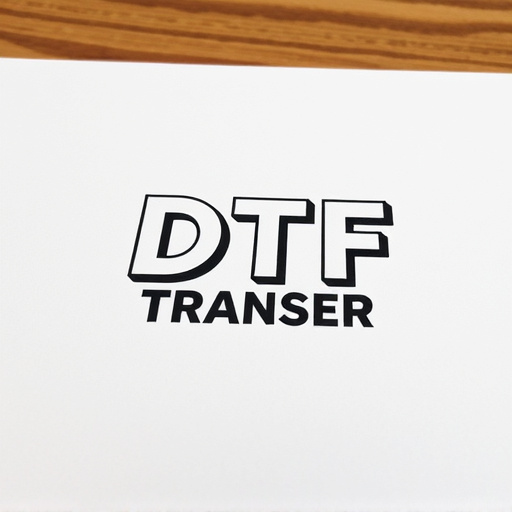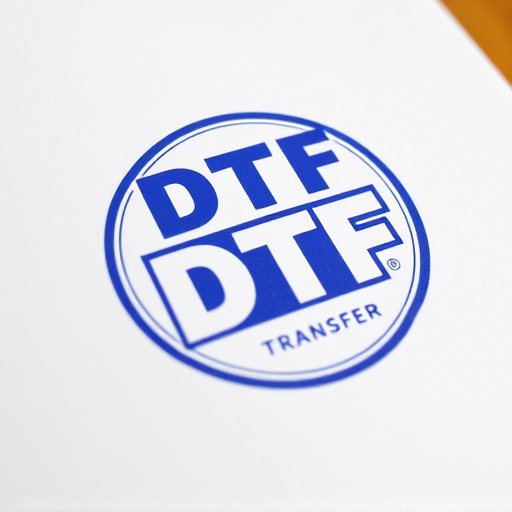Direct-to-Film (DTF) transfers have revolutionized printing with high-quality image production on diverse surfaces. Key factors for successful adhesion include substrate preparation, ambient conditions during application, and precise timing of UV curing. Common pitfalls such as improper surface cleaning, incorrect etch solutions, and over/insufficient curing must be avoided. Rigorous testing under simulated real-world conditions ensures DTF transfers meet quality standards. Best practices involve using clean surfaces, compatible materials, controlled environmental conditions, full cure times, and regular equipment maintenance to extend the lifespan of DTF prints.
“Direct-to-film (DTF) transfers have revolutionized graphic printing, offering durable and vibrant results. Yet, achieving optimal adhesion is key for long-lasting prints. This article delves into the science behind DTF transfer duration, exploring factors like film type, surface preparation, and environmental conditions. We’ll guide you through the process, from understanding DTF’s basics to best practices, ensuring your prints stay sticky and vibrant for years. By mastering the art of DTF adhesion, you can produce high-quality, long-lasting films.”
- Understanding Direct-to-Film (DTF) Transfers: A Brief Overview
- Factors Influencing Adhesion Time of DTF Transfers
- Optimal Conditions for DTF Transfer Adhesion
- Common Mistakes to Avoid During DTF Printing Process
- Testing and Evaluating DTF Prints for Adhesion Quality
- Best Practices for Achieving Long-Lasting DTF Transfers
Understanding Direct-to-Film (DTF) Transfers: A Brief Overview

Direct-to-Film (DTF) transfers are a cutting-edge printing technology that has revolutionized the way we produce high-quality images and graphics directly onto various surfaces, including film and vinyl. This innovative process eliminates the need for intermediate steps, such as printing on paper or plastic, and then transferring the image. With DTF, designs can be printed directly onto the desired substrate using specialized inks and machines, ensuring a seamless and durable finish.
DTF transfers offer several advantages, particularly in the fields of signmaking, vehicle graphics, and decorative arts. The technology allows for precise color reproduction, vibrant hues, and exceptional detail, making DTF prints visually stunning. Moreover, the direct application method ensures better adhesion to the substrate, resulting in longer-lasting and more resilient decorations. Understanding DTF transfers is key to leveraging this technology’s potential and achieving exceptional results in various applications.
Factors Influencing Adhesion Time of DTF Transfers

The duration for which a direct-to-film (DTF) transfer remains adherent to a substrate is influenced by several key factors. Firstly, the quality and type of both the DTF film and the underlying surface play significant roles. Different materials have varying levels of adhesion, with some films designed specifically for enhanced bonding to specific types of surfaces like metal, plastic, or glass. The smoothness and cleanliness of these surfaces are also critical; any contaminants or roughness can impair the transfer’s adherence.
Additionally, environmental conditions during application matter greatly. Factors such as temperature and humidity significantly affect the curing process of the DTF film, which is when it forms a strong bond with the substrate. Optimal adhesion often requires specific temperature ranges and controlled humidity levels to ensure the DTF prints remain securely attached without peeling or cracking over time.
Optimal Conditions for DTF Transfer Adhesion

For optimal adhesion of direct-to-film (DTF) transfers, certain conditions must be met. The process involves careful consideration of temperature, pressure, and time. Typically, DTF transfers require a warm surface to ensure the adhesive binds effectively with the substrate. A temperature range of 40-60°C is often recommended for optimal results, as this promotes molecular bonding between the film and the material being transferred.
Pressure plays a crucial role too. Applying consistent pressure during the transfer ensures intimate contact between the DTF print and the surface. This step is particularly important when dealing with delicate materials or intricate designs to prevent air bubbles and ensure even adhesion. The duration for which these conditions should be maintained varies based on the specific adhesive and material used but generally ranges from 15-30 seconds, allowing ample time for strong, long-lasting bonds to form.
Common Mistakes to Avoid During DTF Printing Process

When conducting DTF transfers, it’s crucial to avoid common pitfalls that can compromise adhesion and print quality. One frequent mistake is improper surface preparation; ensuring the substrate is clean, free from oils and dust, and properly etched is vital for successful DTF printing. Using the wrong etch solutions or not following the manufacturer’s guidelines can lead to inadequate adhesion, resulting in prints that lift or bubble.
Another error is exceeding the recommended exposure time during the UV curing process. Over-curing can cause the DTF transfer to become brittle and delaminate from the substrate. Conversely, insufficient curing leaves the adhesive soft, leading to smudging and poor image quality. Always refer to the material specifications for accurate curing times and techniques to avoid these issues with DTF prints.
Testing and Evaluating DTF Prints for Adhesion Quality

To ensure the proper adhesion of direct-to-film (DTF) transfers, thorough testing and evaluation of DTF prints are essential. This process involves subjecting the printed films to various conditions to mimic real-world exposure and determine their durability. Experts recommend conducting peel tests to assess how well the transfer adheres to different surfaces after a specific duration. By exposing the DTF prints to heat, moisture, or even extreme temperatures, manufacturers can simulate the effects of time and environmental factors on the adhesion quality.
During evaluation, visual inspection plays a crucial role. Observing any signs of delamination, bubbling, or cracking helps identify potential issues with the transfer’s adhesive properties. Additionally, measuring the peel strength provides quantitative data to compare different DTF formulations and printing techniques. This meticulous testing ensures that DTF transfers meet high-quality standards, providing long-lasting adhesion when applied to various substrates, from vehicles to decorative surfaces.
Best Practices for Achieving Long-Lasting DTF Transfers

To ensure long-lasting direct-to-film (DTF) transfers, it’s crucial to follow best practices that enhance adhesion and protect prints from fading or peeling. First, prepare the surface thoroughly by cleaning it to remove any dust, grease, or contaminants that could weaken the bond between the film and substrate. A smooth and dry surface is ideal for DTF printing. Next, select appropriate DTF films and printers compatible with your materials to guarantee optimal results. The right combination of film type, ink, and print settings can significantly improve adhesion.
Additionally, controlling environmental factors like temperature and humidity is essential. Most DTF transfers perform best in cool, dry conditions. Avoid exposing prints to direct sunlight or extreme heat, as these can accelerate fading. Instead, allow new DTF prints to cure completely before applying pressure to prevent bubbles or cracks. Regularly cleaning your printing equipment and using high-quality inks and solvents will also contribute to the longevity of your DTF prints.














